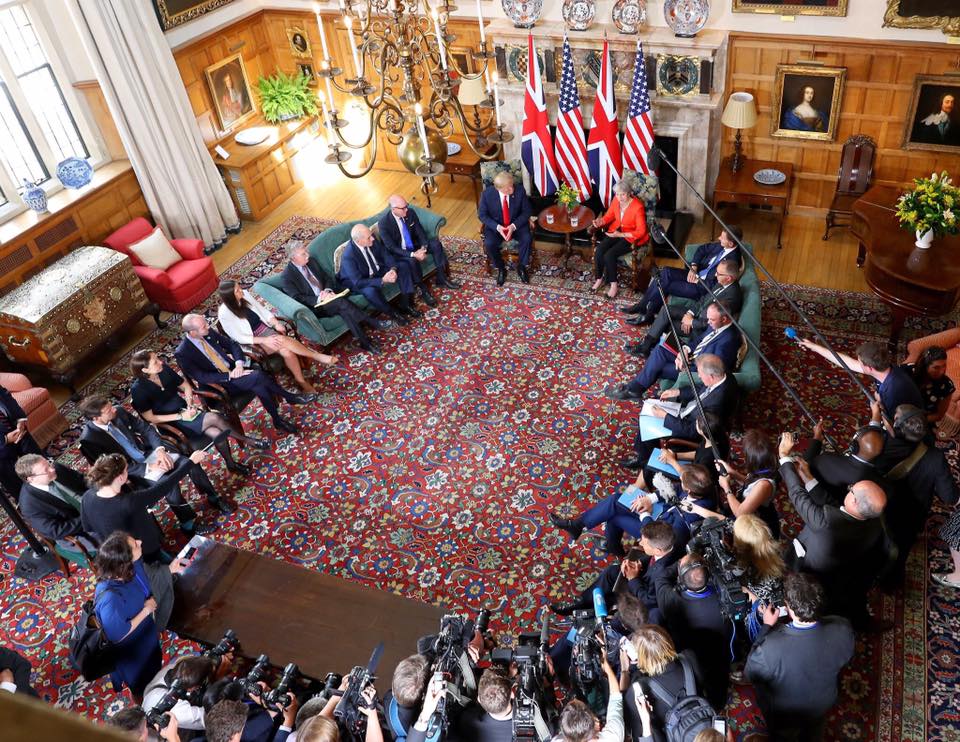The European Union and the United Kingdom signed an agreement on Tuesday (25) proposed by British Prime Minister Theresa May that provides for the terms of Brexit – the departure of the United Kingdom from the regional bloc. The negotiation to sign the document dominated the headlines of European newspapers in recent days.
But what exactly is Brexit? BBC News has put together a series of questions and answers so you can finally understand what it is about. What is Brexit? Brexit is an abbreviation for “British exit” (British exit, in the literal translation into Portuguese). This is the most commonly used term when it comes to the UK’s decision to leave the European Union.
What is the European Union? It is a group formed by 28 European countries that practice free trade among themselves and facilitate the transit of their nationals to work and to live in any part of the territory. The United Kingdom became part of the European Union – at that time called the European Economic Community – in 1973.
Why is the UK leaving the block?
In a referendum on June 23, 2016, the British were asked if the UK should remain or leave the European Union. The majority – 52% against 48% – decided that the country should leave the regional bloc. But the exit did not happen immediately, was scheduled for March 29, 2019. What has happened since then? The referendum was just the beginning of a lawsuit.
Since then, negotiations have been held between the UK and the other EU countries. The discussions centered on the terms of this “divorce”, which would define how this exit from the United Kingdom would be, not what would happen after this “separation”. The agreement presented by Theresa May is known as the “withdrawal agreement.”
What was agreed upon?
The drafting of this withdrawal agreement from the United Kingdom of the European Union includes: – The amount that the United Kingdom will have to pay to the European Union for breaking the partnership contract: about 39 billion pounds (R $ 191 billion) – What will happen to British citizens living in other European countries and Europeans living in the UK: European citizens who are already in the UK before the Brexit and the end of the transitional period will be able to maintain their current residence rights and access to public services (the same goes for Britons living in European countries) – Seeks a way to avoid returning to a closed border between Northern Ireland (which is part of Great Britain) and the Republic of Ireland (which is an independent country that is part of the European Union) A transition period has been agreed to allow the United Kingdom and the European Union to formulate a trade agreement and to allow companies to organize.
This means that if the “withdrawal agreement” receives a green light, there will be no change in the current situation between March 29, 2019 and December 31, 2020. A much shorter document has been prepared with a preview of what the future relationship between the UK and the European Union will look like. This is a political statement.
But neither side will need to rely exactly on what this document foresees – is just a set of intentions for future negotiations.
What will happen now?
Theresa May and the leaders of 27 European nations met this weekend in Brussels and signed the withdrawal agreement as well as the political declaration on the future of UK-European Union relations.
The official signing ceremony took an hour and a half. Theresa May now needs to persuade members of the British Parliament to approve the document. The vote is expected to take place in December.
Will the agreement be approved by parliament?
Well, at the moment, it looks like he has a chance of being rejected. May does not have enough support within his own party (the Conservative Party), nor among parliamentarians of other acronyms.
There are several complaints, many of which question whether the agreement will, in fact, guarantee a resumption of control of British territory. And some of the parliamentarians who advocate the UK’s stay in the European Union want a new referendum.
What will happen if the parliament rejects the agreement?
That is not clear. In theory, this would mean leaving the United Kingdom without an agreement with the European Union that could ease the effects of the country’s withdrawal from the bloc. But the parliamentarians would have, in this case, 21 days to propose a solution.
Will the UK definitely leave the European Union on March 29, 2019?
It is envisaged by law that the UK will leave the block at 11:00 p.m. on March 29 (London time). But if there is no agreement or if parliament rejects the text proposed by Theresa May, it is impossible to say for sure what will happen. The deadline of 29 March may eventually be extended – but all 28 members of the European Union would have to agree. Another possibility is to allow the prime minister to try once again to approve the withdrawal agreement in parliament.
A third suggestion is to hold a new referendum, possibly asking whether voters approve the agreement rather than asking whether they want to leave the European Union or not.
What happens if the UK leaves the bloc without an agreement?
The “no deal” (without agreement) means that the UK has failed to find a consensus on the terms of its exit from the bloc. At first, this would mean not having a transitional period after Brexit (29 March) – in this case, the UK would sever all ties with the European Union overnight. The government has already started planning to prepare the country for this most radical hypothesis. It has published, for example, a series of guidelines ranging from passports to pets to the impact on energy supply.
Labor Party leader Jeremy Corbyn says it would be a “national disaster” if the UK left the European Union without an agreement. But some Brexit lawmakers downplay the impact of the “no deal” and advocate a clear break with the European bloc.
Anything else I should know?
Northern Ireland has figured heavily in the Brexit discussions. Both the United Kingdom and the European Union want to avoid closing the border between Northern Ireland and Ireland. There are currently no guards at checkpoints or passport checks. There are some explanations for this.
First, the absence of a “rigid” border between the two territories is a fundamental aspect of the 1998 peace agreement, which ended conflicts between advocates of the independence of the Republic of Ireland and “Unionists”, who defended a single Irish territory integrated with Great Britain Brittany.
The second reason is the strong economic integration between the two Irish. Large amounts of goods and services cross the border every day without having to go through checkpoints. But leaving the frontier open after Brexit would mean a relaxation of the resumption of border control by the UK, as the free flow of people and goods would continue to a large extent between the Republic of Ireland (which is the European Union) and Ireland (which is the United Kingdom).
Theresa May tries to include a clause that says a rigid border between the two territories will never be implemented, even if Britain and the European Union do not reach a reasonable agreement on the future of trade between them. This means that Northern Ireland – but not the rest of the UK – would still follow some of the main rules of trade and flow of people in the European Union.
I will take this deal back to the House of Commons confident we have achieved the best deal available and full of optimism about the future of our country.
#BackTheBrexitDeal
Publicado por Theresa May em Domingo, 25 de novembro de 2018





